If you’re lucky, the most serious cooking mishap you’ll ever experience is a burnt pot or pan. But if a fire starts in your oven or stovetop, it could quickly spread throughout your kitchen, putting your home and family at risk.
Fortunately, there are a few simple steps you can take to extinguish a kitchen fire before it has a chance to do any real damage.
Here are some tips for putting out a kitchen fire in no time at all!
Types of Kitchen Fires
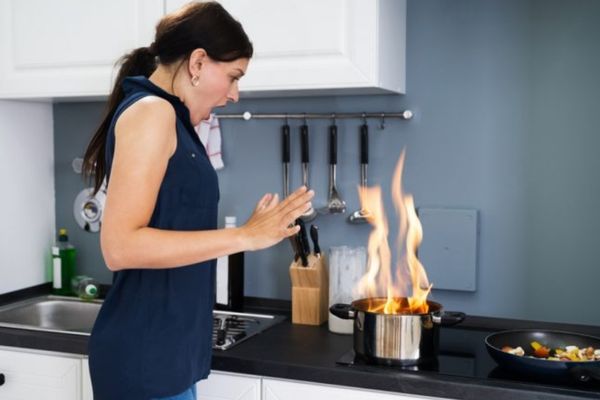
While most people think of fire as something that occurs outdoors, the reality is that kitchen fires are actually very common.
In fact, according to the National Fire Protection Association, cooking is the leading cause of home fires.
There are three types of kitchen fires- grease, oven, and stovetop. Each type requires a different extinguishing method, so it’s important to understand what kind of kitchen fire you’re dealing with and the best way to put it out.
Grease Fires
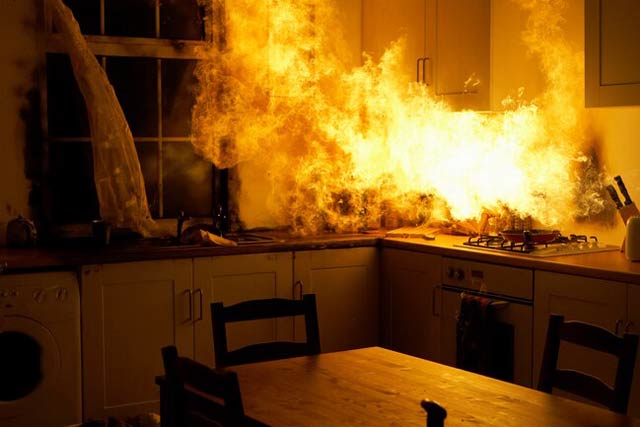
Grease fires occur when cooking oil or grease gets too hot. They can be extinguished by smothering the fire with a lid, fire blanket, or baking soda. Never use water to extinguish a grease fire, as it will only spread the fire.
Oven Fires
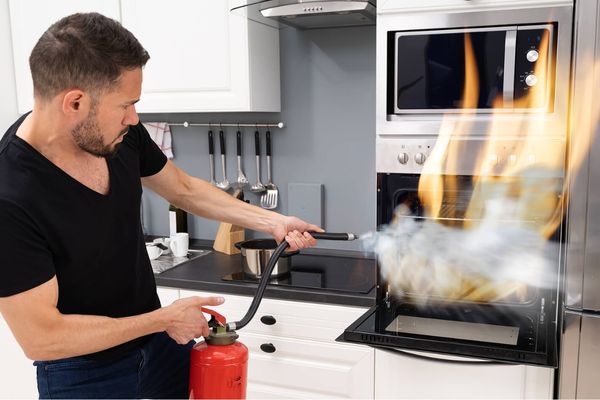
Oven fires are usually caused by food left unattended and caught on fire. They can be extinguished by turning off the oven and closing the door. Do not try to open the door of a burning oven, as this will cause oxygen to feed the fire.
Stovetop Fires
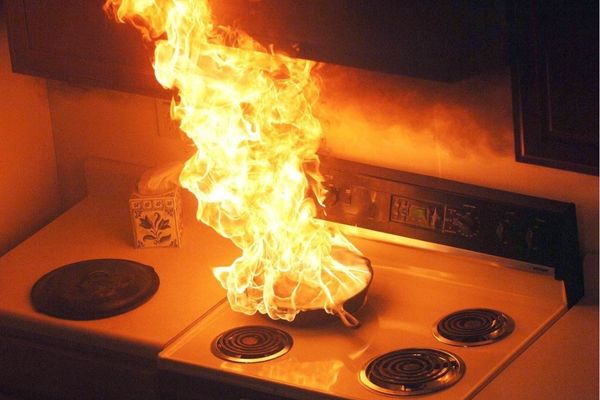
Stovetop fires are usually caused by food that is left unattended and catches on fire. They can be extinguished by turning off the stove and using baking soda to smother the flames (which also works for electrical fires). Never use water to extinguish a stovetop fire, as it will only spread it.
How to Put Out a Kitchen Fire Using a Fire Extinguisher
If you have a fire extinguisher in your kitchen, use it! Stand at a safe distance from the fire and point the fire extinguisher at the base of the flames. NOTE: A fire blanket will also work well for this purpose.
Be sure to hold the extinguisher with the nozzle pointing away from you and squeeze the lever slowly and evenly. The extinguisher will discharge a chemical stream to smother the fire, assuming that it’s still in working order.
Once the fire is out, carefully check for any remaining hotspots and continue to spray until they are extinguished.
Remember to ventilate the area by opening all of the doors and windows.
How to Put Out a Kitchen Fire Using Baking Soda and Vinegar
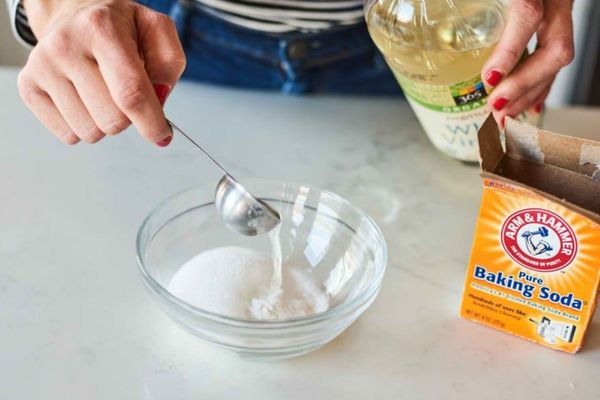
Using baking soda and vinegar to extinguish a kitchen fire is a very common practice due to its effectiveness. Baking soda is alkaline and will react with vinegar (an acid) to create carbon dioxide gas. This gas will smother the flames.
Here’s how it’s done:
- Turn off the heat source and cover the fire with a metal lid or baking sheet if possible. This will help to smother the flames and deprive them of oxygen.
- Sprinkle baking soda over the fire. The baking soda will react with the vinegar to create carbon dioxide, which will snuff out the fire.
- Pour vinegar onto the area where the fire started. The vinegar’s acidity will help break down any remaining grease or food particles that may be fuelling the fire.
How to Put Out a Kitchen Fire Using Water
Water is another effective way to put out a small fire. But beware- using water on a grease fire can worsen the situation!
If you experience a small, non-grease fire and you’re going to use water, here’s how to do it:
- Turn off the heat source. If the fire is coming from the stovetop, turn off the burners. If it’s coming from the oven, turn off the power at the breaker box.
- Douse the flames with water. Aim for the base of the fire, and pour slowly so that the water has a chance to reach all of the burning material. Be careful not to splash water on yourself or anyone else in the vicinity.
Kitchen Fire Safety Rules to Prevent Kitchen Fires
You can take certain steps to help prevent a kitchen fire from occurring in the first place. Here are some important kitchen fire safety rules to follow:
- Keep your stovetop and oven clean. A build-up of grease and food debris can be a major fire hazard. Be sure to regularly clean your stovetop and oven, and wipe up any spills as soon as they happen.
- Don’t leave cooking food unattended. It’s important to stay in the kitchen while you’re cooking, especially if you’re using the stovetop or oven. If you have to leave the room for even a short period of time, turn off the appliances first.
- Keep flammable objects away from the stove. Ensure things like towels, pot holders, and curtains are not hanging too close to the stove. Also, be sure to store combustible liquids like cooking oil away from heat sources.
- Be prepared with a fire extinguisher. In case of a small kitchen fire, it’s important to have a fire extinguisher on hand so you can put it out quickly. Be sure to check the expiration date on your fire extinguisher and keep it in an easily accessible place.
- Know how to use the stovetop safely. If you’re using a gas stove, ensure the flame is always blue. If it’s yellow, that means the gas isn’t burning properly and could leak, which is a fire hazard.
- With an electric stove, be sure to use proper pot and pan sizes, so they don’t extend over the element.
By following these simple kitchen fire safety rules, you can help prevent a fire from occurring in your home.
Frequently Asked Questions (FAQs)
Can you use flour to put out a grease fire?
No. Using flour to put out a grease fire is quite dangerous and can make the fire worse. Flour is a highly combustible material, so when it’s added to the fire, it can cause the flames to spread very quickly.
What is the most common cause of kitchen fires?
The most common cause of kitchen fires is unattended cooking. It’s important to stay in the kitchen when you’re cooking and to keep an eye on the food at all times. If you have to leave the kitchen for any reason, turn off the stove or oven first.
Other common causes of kitchen fires include grease and oil build-up, electrical problems, and incorrect use of flammable liquids.
What fire extinguisher do I need for the kitchen?
Class K fire extinguishers are specifically designed for use in commercial kitchens. They’re able to effectively put out common types of cooking fires. These extinguishers are filled with a potassium-based agent that can quickly cool hot oils and grease fires and are unlikely to freeze. .
However, for home kitchens, either a Class B (designed to extinguish grease, oil, or alcohol-related blazes) or a multipurpose ABC fire extinguisher will work fine.
Wrapping it Up
Kitchen fires can be terrifying and destructive, but with a little knowledge about how to put them out, you can feel more confident dealing with them.
Remember these tips the next time you face a kitchen fire: use a fire extinguisher if you have one, baking soda and vinegar if you don’t, and always stay calm.
By following these steps, you can quickly and easily put out a kitchen fire – no firefighters required!

